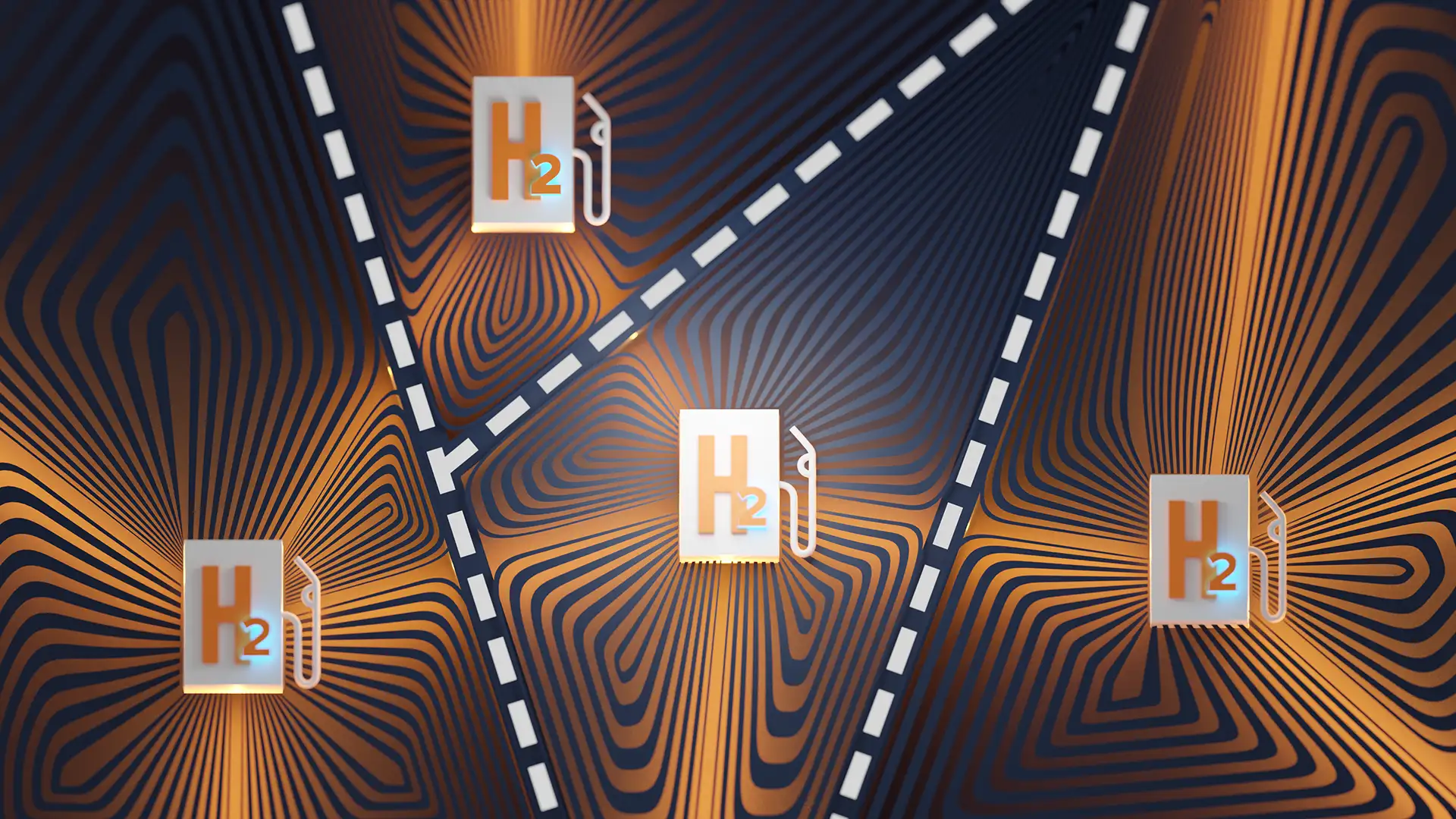Can the hopes for hydrogen mobility match the hype? In theory, clean hydrogen could eliminate carbon dioxide emissions from big energy users like road transport, aviation and shipping, helping the European Union meet its pledge to become climate-neutral by 2050. As the most abundant element in the universe, hydrogen is in plentiful supply. Being the most flexible energy carrier, it is also the perfect match with renewable energy It is also versatile and already widely used across industries. Above all, it accelerates decarbonation of transport: hydrogen fuel cell electric vehicles emit only water from their tailpipes.
But for all the promises of the perfect, carbon-free fuel for transport and other industries, the challenges to get there are enormous. A complete overhaul of the energy system is required, including lower production costs, transport and storage facilities and a viable Single Market. When it comes to hydrogen mobility, the network needed for the hydrogen power supply chain does not exist yet. There are only a handful of refuelling stations for hydrogen vehicles in Europe – less than 200, according to the International Energy Agency (this number is confirmed by the 2020 assessment of the Hydrogen Council amounting to 260), echoing the recharging issues facing electric and hybrid vehicles more than a decade ago.
Nevertheless, every big venture has to start somewhere. One of the biggest obstacle to zero-emission hydrogen mobility is interoperability. If hydrogen mobility is to become seamless across Europe, it needs interoperable hydrogen refuelling stations (HRSs) in every country. The success of hydrogen mobility depends not just on the amount of infrastructure available, but also on the ease of access to and use of that infrastructure across national borders.
This is not the case yet. But it can be. The EU needs to agree on a standard vehicle or driver identification mechanism at the station to link the vehicle to the refuelling system.
Ensuring standardised access
Like any emerging solution, hydrogen mobility does not start from scratch: it is already used in business-to-business (B2B) models with professional fleets. However, this has led many of the HRS operators adopting exclusive identification and payment systems with user fleets which limits the scope of hydrogen mobility: users can only refuel at specific stations in Europe. Nor does the user have clear market information about prices and available stations.
These factors represent concrete obstacles to the deployment of hydrogen mobility in Europe. And they add up to a Single Market barrier: although this market is emerging, it cannot fully develop unless there are clear, enforced and EU-wide rules on hydrogen refuelling.
As in many emerging markets, the regulatory barriers to hydrogen mobility are not yet obvious. With the EU’s ambitious climate goals, time is of the essence and the challenge is to provide a framework so that the market does not develop in an uncoordinated, non-standardised way. Mobility, especially for professional users, is based on the Single Market. If professional drivers cannot use the new zero-emission vehicles for their long journeys – which often cross borders – then the hopes for zero mobility could be stifled at birth.
This is especially urgent given the EU’s stated ambitions for a hydrogen ecosystem that includes mobility. The European Commission’s Fit for 55 package, published in July 2021, puts the EU on course to deliver climate neutrality by 2050 and includes many measures, notably one hydrogen refuelling station available every 150 km at least along the TEN-T core network and one hydrogen refuelling station per urban node.
Before that, the Commission’s July 2020 Hydrogen Strategy called for the EU to become a global leader in hydrogen development. The Commission’s December 2020 Sustainable and Smart Mobility Strategy aimed to have at least 30 million zero-emission cars and 80,000 zero-emission trucks on European roads by 2030 – with hydrogen mobility accounting for much of them.

All of this means that authorities and market players need to work together. We need to secure access for professional end users to every single station, wherever its location in any of the EU’s Member States. We need to ensure standardisation at European level of the vehicle or driver identification mechanism at the station and the communication so that it will be as easy to fill up with hydrogen as it is with diesel. We need to deploy dual pressure stations (350 and 700 bars). And we need the same safety regulations: in Germany, the current safety distances around the stations are not the same as in France, where a wall is also required. Some countries, like France, have set up an authorisation system (ICPE 4715 – Installations Classified for the Protection of the Environment) for energy storage above one tonne.
Unless we can resolve these issues and craft a real single market in the EU, hydrogen will struggle to develop as a future fuel and a viable part of the energy equation in European mobility. But if we can, then hydrogen mobility has the potential to revolutionise mobility by decarbonising transport and offering a real solution to the climate crisis.
The success of hydrogen mobility depends not just on the amount of infrastructure available, but also on the ease of access to and use of that infrastructure across national borders.
If professional drivers cannot use the new zero-emission vehicles for their long journeys – which often cross borders – then the hopes for zero mobility could be stifled from the outset.

